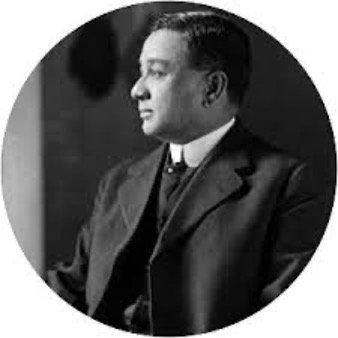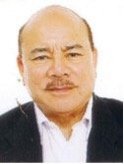The Pioneering Earnshaw Brothers
/Little is said about the economic progress achieved in this era with Filipinos —native-born Spanish who identified with the country, Chinese-Filipino mestizos, and native ilustrados—who contributed to making the Philippines one of the economic hotspots of Asia at the time. Manila was known as “the Pearl of the Orient Seas” with the business center Binondo described as “the Paris of the Orient.”
The city had glamorous hotels such as the Oriente on the main square of Binondo. Intramuros had three centuries of history with seven splendid churches and a plethora of academic institutions such as the University of Santo Tomas (dating back to 1611), San Juan de Letran, and the Ateneo de Manila. The two centers of Intramuros and Binondo were splendidly lit with street lamps and interconnected with what would become efficient telephone and streetcar systems. The grid for the twentieth century had been laid; low-hanging fruit for the new American imperialists.
Out of those schools came trained lawyers, professors, primary school instructors, builders, skilled artists, musicians, maritime engineers, and businessmen. Women were also schooled in top institutions that went beyond the domestic arts, such as Santa Rosa and La Concordia. Rizal’s mother and sisters studied in such places and were the equals of any man at the time.
While the Filipinos may have chafed at the oppressive rule of the friars and reactionary government officials, they were also proving their mettle in fields that would lay the groundwork for the economic boom under the American occupation from 1898 to 1941. This was the “Belle Epoque” of the Philippines, also known as “Peacetime” in native parlance.
Two representatives of this economic, political, and social progress were brothers Tomas and Manuel Earnshaw, who belonged to the same mestizo class as President Manuel L. Quezon, the Zobel de Ayalas, the Elizaldes and the Aboitizes. Yet, Filipino and Chinese mestizos were also part of this economic boom, as represented by the Yangcos and Ongpins, while the more native Osmeñas and Roxases were coming into their own in the political arena.
Manuel Earnshaw
The name “Earnshaw” is deceptive because it makes one err into thinking they were American or European. Indeed, their ancestor was Daniel Earnshaw, an English engineer commissioned by the Spanish government to work for the navy yard in Cavite. He arrived in 1864 to build a marine slipway in Cavite, the principal port since the time of the Manila galleon and a political flash point due to its strategic position.
Daniel Earnshaw had decided to stay in Manila and married a native india Gavina San Agustin Noguera, with whom he had five children. Two of them were Manuel (November 19, 1862-February 13, 1936) and Tomas (November 5, 1867-March 11, 1954). They were native Filipino as much as they were British and thus belonged to the mestizo class that would shape the Philippines in the twentieth century.
Their careers give us a glimpse into their real lives beyond the gilded images that we now receive through urban legend and historic distortion.
Consider the following:
- Tomas Earnshaw studied high school in the Ateneo Municipal, after which he had practical training in his father Daniel’s shops until he was 20 years old
- Then he was employed as maquinista on various interisland vessels; he also worked at the Arsenal in Cavite, where he passed the 2nd and 1st maquinista naval examination, equivalent to a naval engineer test (the same tests passed by Juan Luna).
- In 1893, he was named maquinista at the Manila Waterworks and later, in 1897, as perito mecanico reconocedor (expert mechanical inspector) of ships that docked at the Port of Manila. Then he served as hull and boiler inspector for the Manila harbor. These were positions he earned by competitive examination.
- He then became the chief engineer at the Boyle and Earnshaw Shops in 1899, and one of the incorporators ten years later of Manuel Earnshaw and Company, Ltd, as its first vice-president and later, its treasurer.
Like his brother Manuel, Tomas Earnshaw y Noguera distinguished himself in private enterprise and public service. As Mayor of Manila, he oversaw the realization of Manila as “the City Beautiful” in his term. Manila honors him today with an Elementary School named after him and a Sampaloc street.
Belief in education and training was reflected in the older brother Manuel’s academic record as well. Like Tomas, he also studied at the Ateneo Municipal—established by the Jesuits who had returned to the islands in 1859-- and learned the business of shipbuilding as an apprentice in his father’ s engineering firm. He joined the Spanish Navy and earned a marine engineering degree from the Manila Nautical School.
Beginning 1885, he worked for his father’s business, D. Earnshaw and Company, as a marine engineer and then joined the Wilks and Boyle Company in 1888. His career is described as follows:
Four years later, he rose to partner in the company and his name was emblazoned in the new masthead, Boyle and Earnshaw. In 1901, Earnshaw acquired full control of the company, later renamed Earnshaw Slipways & Engineering Company, and formed a new partnership that included his brothers. By 1912, Earnshaw s company had grown into the islands’ largest shipbuilding plant—capable of repairing or building boats up to 460 feet in length at its docks and facility that spread across more than seven acres.
This enterprise went on to greater heights. It became the Earnshaw Docks and Honolulu Iron Works when the latter purchased the controlling works in the Earnshaw Slipways and Eng. Co., which enabled the accommodation of vessels up to 12,000 tons in its dry docks and made possible the handling of any class of repairs of heavy and light machinery. This merged company became of great service to the sugar industry, among other things. It also signaled the Philippines’ entry into the industrial era as second only to Japan in terms of progress.
As Philippine Resident Commissioner, Manuel Earnshaw earned his stripes by ensuring the passage of the Jones law, which guaranteed Philippine Independence by 1945. His Filipino-British ancestry is visible in his facial features.
Both Tomas and Manuel rendered public service and served the incipient Philippine Commonwealth and Republic at the highest levels. They were also sympathizers of the Philippine Revolution in its early stages, having been Masons.
Tomas Earnshaw served the government for the first time as a member of the Independence Mission of 1919 headed by Manuel L. Quezon. He was appointed mayor of Manila on November 3 and assumed office on December 1, 1927, succeeding Miguel Romualdez, whose reappointment was rejected by the Philippine Senate on August 26, 1927. He had many accomplishments as mayor, including the construction of Dewey (now Roxas) Boulevard, the Metropolitan Theatre, the Barrio Obrero, and Harrison Park. In 1931, he reported that “the resources of the city increased by more than half a million pesos…Peace, order and public health were excellent.”
Manuel Earnshaw was persuaded by President Quezon to serve as Resident Commissioner—the equivalent of Ambassador for a colony or territory-- from 1913 to 1917. He was reluctant at first since he considered himself primarily as a businessman and not as a politician. However, he had one important qualification. Unlike the first Resident Commissioner Benito Legarda, who did not believe in independence for the Philippines, Manuel Earnshaw was a firm advocate. He was quoted as saying that “it is favored by all classes in the islands.”
Earnshaw’s tenure as Resident Commissioner paved the way for the realization of the Jones Law, which led the way towards eventual independence ten years after 1935.
“Both Tomas and Manuel Earnshaw rendered public service and served the incipient Philippine Commonwealth and Republic at the highest levels.”
He returned to the Philippines to devote himself to his business affairs, until his retirement in 1921. Tragically, on February 13, 1936, he committed suicide in his family’s mausoleum, citing his age of 72, declining health, and financial reverses as the reasons. He was interred in the Cementerio del Norte, where five other Resident Commissioners (Benito Legarda, Pablo Ocampo, Jaime de Veyra, Teodoro Yangco, and Isauro Gabaldon) were also buried.
President Quezon lauded Manuel Earnshaw as a “wonderful man in every respect and a sincere patriot….The part he took in getting through Congress the Jones Act has given him a place in the history of the Philippines.”
The two Earnshaws prove that Filipinos of all classes loved and served the Philippines and continued the quest for the freedom and independence our heroes sought in the 19th century. They did not seek public office for the profit that it would bring them. The Earnshaws had been fantastically successful in business before they undertook public service. They pioneered in an area, shipbuilding, which is crucial for the Philippines even today.
They even gave up opportunities for profit during their respective terms and helped establish institutions and heritage sites like Roxas Boulevard and the Metropolitan Theatre, which endure to this day. They may have been sophisticated and cosmopolitan, but they never forgot the country of their Filipino mother, Gavina Noguera. Perhaps, this was their way of honoring her. In turn, Manila named a street in Sampaloc in their honor and an elementary school after Tomas Earnshaw.
In a time when politicians seek public office for private gain, the Earnshaws were an example worth emulating. If only we had more of them today.
Sources for pictures and biodata: Wikipedia
A career diplomat of 35 years, Ambassador Virgilio A. Reyes, Jr. served as Philippine Ambassador to South Africa (2003-2009) and Italy (2011-2014), his last posting before he retired. He is now engaged in writing, traveling and is dedicated to cultural heritage projects.
More articles by Ambassador Virgilio Reyes, Jr.








